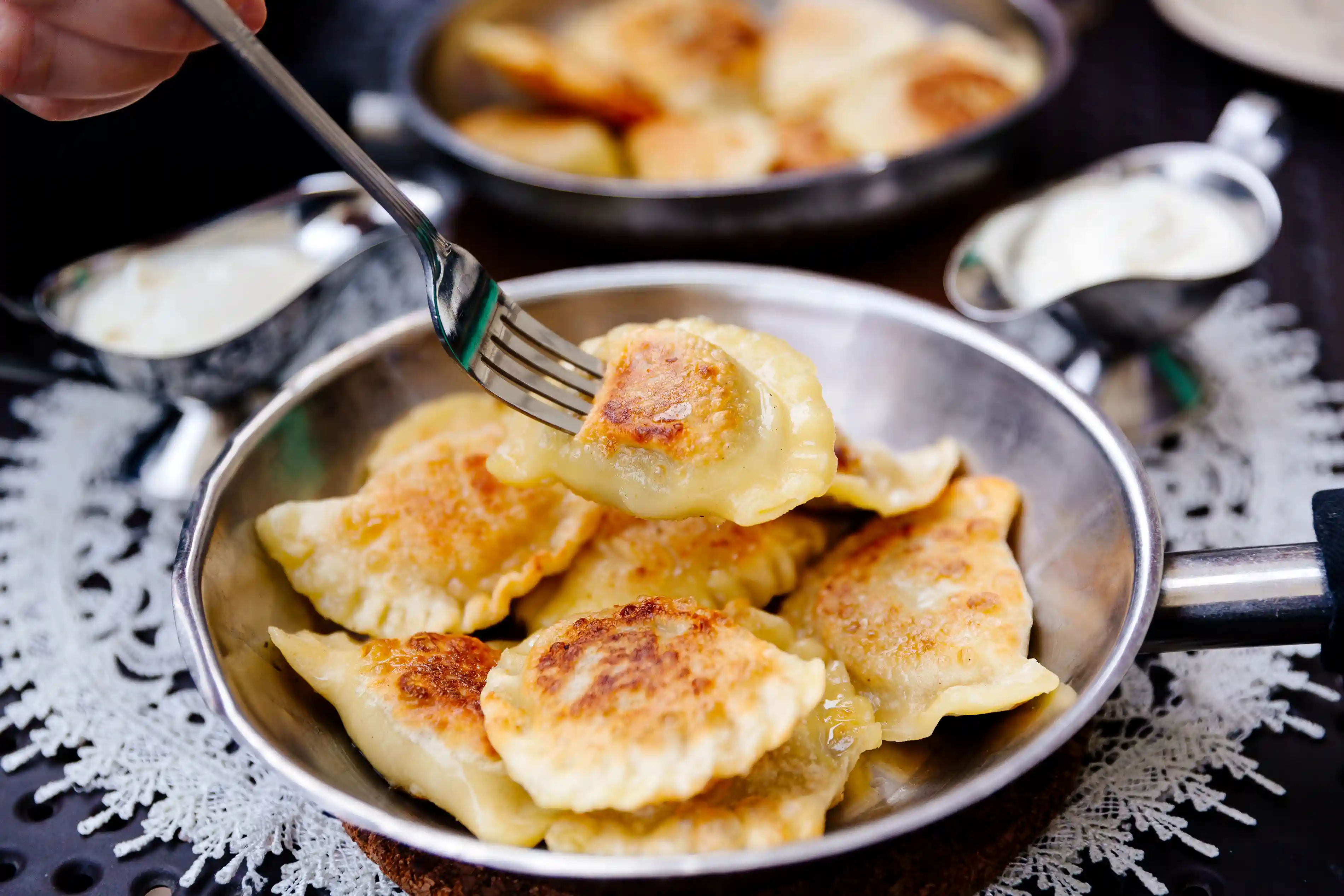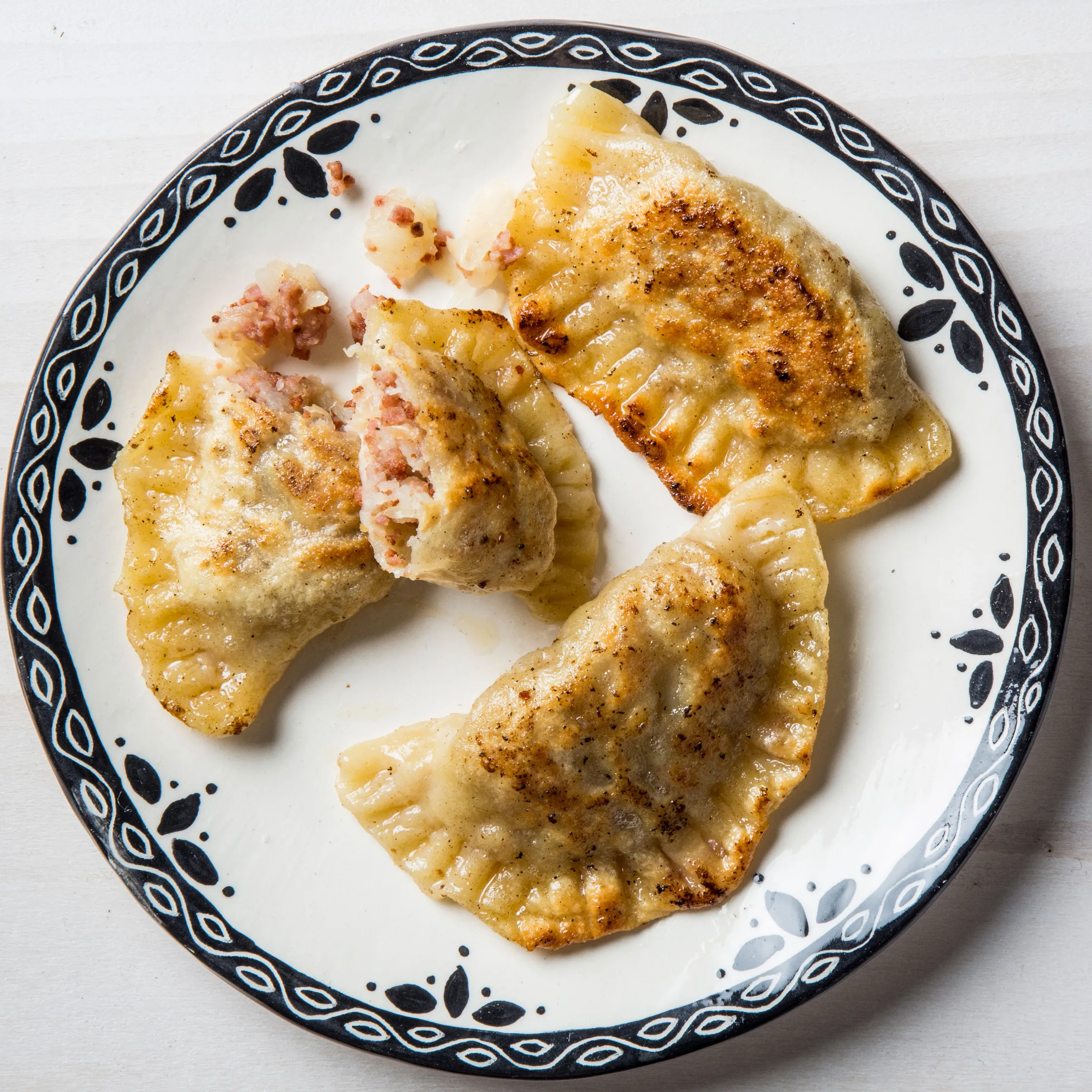Pierogi from Poland
- rosemary
- Mar 17, 2024
- 4 min read
"You can boil, sauté, or fry them, but skip the cutlery and pick them up. It's like holding an edible stress ball." Chason Gordon/Vice

In my head I feel that I have recently come across pierogi in various different places, so feeling that this is one of those weird coincidence things I decided to investigate. Now, however, I can find only one source - Felicity Cloake's perfect version, which is shown here. As for anything else - well it's gone into the ether. But let's do them anyway.
I guess my main question about pierogi is what is so special about them? Aren't they just the same as all those other dumplings, and pasties, that you find in just about every country of the world? What differentiates them from all the others?

Well having now perused lots of different sites, I'm not sure if I have the answer - particularly when you find that there is a huge range of fillings for these little pastries, from potatoes and cheese, through meat, various vegetables and sauerkraut to cherries and other sweet things. So there's obviously nothing prescriptive about the filling - I mean compare the two pictures so far. The shape - well the crescent part of it - is the only thing that you could say is the same. They are not even cooked the same way - you can boil them, boil them then sauté or fry them or even bake them. And there's lots of competition from nearby Eastern European countries with very similar things, all with names beginning with p. Chason Gordon, on the Vice website, explains the very subtle differences between them all in an article called The Difference Between Pierogi, Piroshky, Pelmeni, and Paczki.
I should also mention here, that they are apparently very big in America and Canada, which has led some people to ask whether they are actually American. Apparently not to that last question. Although - there was much criticism of debased versions found in the freezer cabinets of the American supermarket. You can get some here too - Sam's Pelmeni and Pierogi - a company formed in 1995 by an immigrant engineer from Russia. So you would expect them to be more Russian than Polish.
So I think it's just one of those household things made with whatever is to hand. Mind you I think perhaps the pastry - no yeast - is the most common denominator. The dough has to be soft and pliable:
"Perogies that are ‘over-handled’ will tend to be heavy and chewy. So, make sure you apply the deftest touch and knead as gently as possible before allowing the dough to rest." Natalia Rosa/The Real Word
Such morsels are common all over the world. We all grab a piece of dough, or a piece of bread and stuff it with something. It's portable and therefore makes a sustaining lunch.
"Because various countries figured out how to stuff things into dough, it's nearly impossible to trace the base origin of all of these foods. The Italians have ravioli; the Japanese, gyoza; Americans, stuffed-crust pizza. Some theories suggest that they're all likely predated by jiaozi, a Chinese dumpling." Chason Gordon/Vice
They reckon the pierogi dates back to the 13th century and there is at least one hugely mythical origin tale but honestly it seems to me that almost anything goes.
SBS has a basic recipe with three different fillings from Zuza Zak - Pierogi three ways which is a good introduction I guess. I'm pretty sure that Felicity Cloake's version is an example of Pierogi Ruskie - which does not mean Russian pierogi. the Ruskie bit refers to:
"Ruthenians or Rusyns, the people from around the northern Carpathian Mountains in western Ukraine, eastern Slovakia, and southern Poland." Barbara Rolek/The Spruce Eats
This type has a filling of potato and quark - which I think you can now find in the supermarket - but probably any cheese will do although the closest might be cottage cheese or ricotta. I found three versions of this type - the first from our own Nagi Maehashi of Recipe Tin Eats; the second from someone, I assume a male, with an amazing name - Westerhausen Worcel in one of Stuart Heritage's columns in The Guardian; and one from Ottolenghi via Madga Lockey on his own website.
And I forgot to mention that this type of pierogi is often the kind that is finished by frying in lots of butter and chopped onions with a dollop of sour cream to serve.
Then there are the outliers. Nigel Slater's Sauerkraut and mushroom pierogi look much more like Cornish pasties, but then they are baked in the oven. However he swears they are based on some that he ate in Warsaw and which pleased him the most when he visited Poland. Sarah Hobbs in The Notebook also goes for sauerkraut with her Leek and sauerkraut pierogi which features again, as it often does in Claire Saffitz's Kielbasa, Sauerkraut, and Potato Pierogies on the Bon Appétit website. Finally Anna Key presents slightly more complicated Pierogi ruskie - celery is involved.
I say slightly more complicated, but for me, stuffing little things, from whatever country and however delicious the outcome, is not something to be undertaken lightly. It's a process with several parts - make the pastry, make the filling, cut and stuff the pastry, cook the dumplings, and cook a sauce. I think you have to be in the mood or in the company of enthusiastic helpers - at least when you do the stuffing bit. I saw one recipe which was for 120 of the things. I can't imagine how long that would take. I have at times made around 60 meatballs and that was quite an exercise in patience. Not one of my better qualities.
They do look good though. Maybe one day. When someone has dreamed up a short cut. Though I don't really think that this is short cut food.












The Canadian mother of my two great grandchildren has a Polish grandmother who makes pierogi. I have no such claim to fame.
Not heard of them either. Nor of "edible stress balls". Shows my shelter life